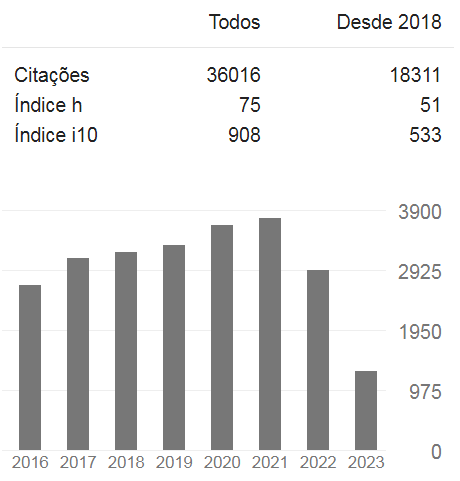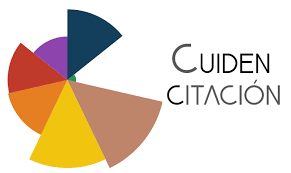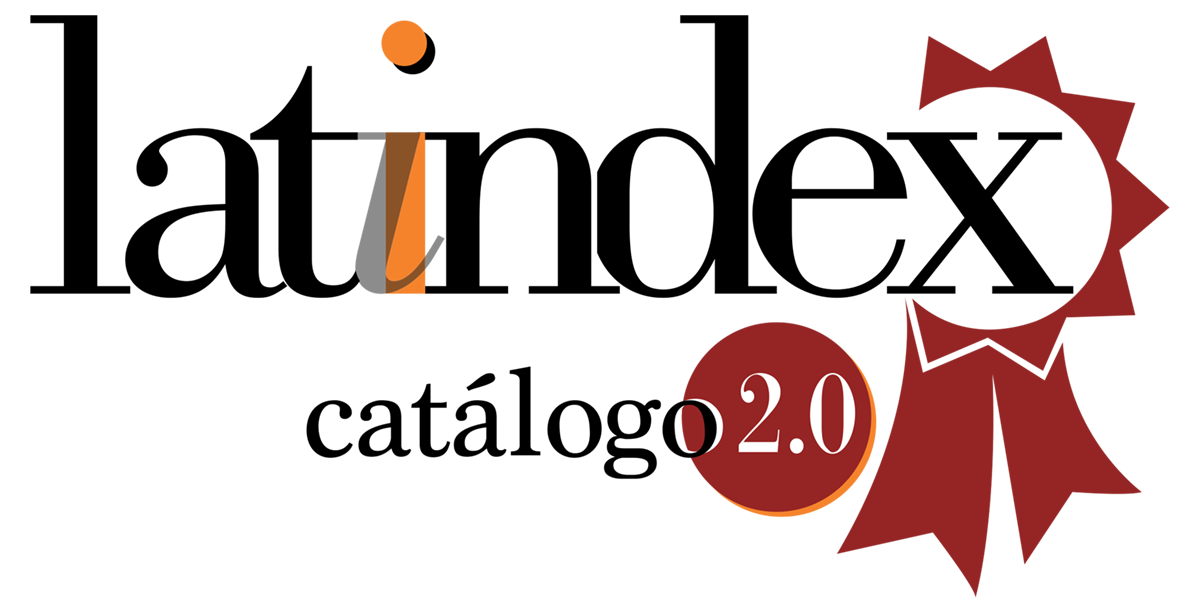Influencia de la posición del nino en la cama sobre el sueno
revisión integradora
DOI:
https://doi.org/10.5935/1415-2762.20150077Palabras clave:
Sueno, Nino, Posicionamiento del Paciente, Atencíon de EnfermeríaResumen
El objetivo de este estudio fue verificar la influencia de la posición de dormir sobre el sueno del nino. Se realizó una revisión integradora en las bibliotecas PubMed, LILACS, SciELO y Cochrane con los descriptores sleep, infant y las expresiones position y positioning, en espanol, inglés y português, publicados entre 2000y 2013. Fueron identificados seis artículos que atendían los criterios de inclusión. Los estudiosfueron clasficados en despertares y etapas del sueno. Los resultados indicaron que el nino en la posición prona presenta menor cantidad de despertares, lo cual permite un sueno activo más profundo y una mayor cantidad de sueno tranquilo. La posición supina se relaciona con una mayor cantidad de sueno activo y de despertares y no expone al nino al riesgo del síndrome de muerte súbita del lactante. Se llegó a la conclusión que en la posición supina hay más despertares que en la prona pero que, sin embargo, durante el sueno, esa posición es más segura para el nino.Referencias
Crabtree VML, Williams NA. Normal sleep in children and adolescents. Child
Adolesc Psychiatr Clin N Am. 2009 Oct; 18(4):799-811.
Paiva MB, Souza CAC, Soares E. Fatores que interferem na preservação do
sono e repouso de criança em terapia intensiva. Esc Anna Nery Rev Enferm.
; 10(1):29- 35.
Kato I, Scaillet S, Groswasser J, Montemitro E, Togari H, Lin JS, et al.
Spontaneous arousability in prone and supine position in healthy infants.
Sleep. 2006; 29(6): 785-90.
Jones BE. Brain mechanisms of sleep-wake states. In: Kryger MH, Roth T,
Dement WC. Principles and practice of sleep medicine. 4ª ed. Philadelphia:
Elsevier Saunders; 2005. p.136-53.
Madje JA, Krueger JM. Links between the innate immune system and sleep. J
Allergy Clin Immunol. 2005; 116(8): 1188-98.
Geib LTC. Desenvolvimento dos estados de sono na infância. Rev Bras
Enferm. 2007; 60(3): 323-6.
Bonan KC, Pimentel Filho JC, Tristão RM, Jesus JA, Campos Junior D. Sleep
deprivation, pain and prematurity: a review study. Arq Neuropsiquiatr. 2015;
(2): 147-54.
Bruni O, Baumgartner E, Sette S, Ancona M, Caso G, Di Cosimo ME, et al.
Longitudinal study of sleep behavior in normal infants during the first year of
life. J Clin Sleep Med. 2014; 10(10):1119-27.
Khan RL, Raya JP, Nunes ML. Behavioral assessment of sleep state in
newborns. J Epilepsy Clin Neurophysiol. 2009; 32(11):1449-58.
Sukumaran TU. Pediatric sleep project. Indian Pediatr. 2011; 48:17.
Ednick M, Cohen AP, McPhail GL, Beebe D, Simakajornboon N, Amin RS.
A review of the effects of sleep during the first year of life on cognitive,
psychomotor, and temperament development. Sleep. 2009; 32(11):1449-58.
Graven S. Sleep and brain development. Clin Perinatol. 2006; 33: 693-706.
Marta CB, Bragança KL, Leite JL, Francisco MTR, Seabra Junior HC, Silva PO.
The newborns berth’s positions associated to practice care of the nursing
staff. Rev Pesq Cuid Fundam Online. 2012; 4(3):2521-8.
Horne RSC, Franco P, Adamson TM, Groswasser J, Kahn A. Effects of body
position on sleep and arousal characteristics in infants. Early Hum Develop.
; 69: 25-33.
Bertelle V, Sevestre A, Laou-Hap K, Nagahapitiye MC, Sizun J. Sleep in the
neonatal intensive care unit. J Perinat Neonat Nurs. 2007; 21(2):140-8.
Gaíva MAM, Marquesi MC, Rosa MKO. Sleeping pattern of a newborn
hospitalized in the intensive care unit: nursing care. Ciênc Cuid Saúde. 2010;
(3):602-9.
Whittemore R, Knafl K. The integrative review: updated methodology. J Adv
Nurs. 2005; 52(5):546-53.
Centre for Evidence-Based Medicine. Levels of Evidence (March 2009).
Oxford: Oxford Centre for Evidence-Based Medicine; 2014. [Cited 2014
Sep15]. Available from: http://www.cebm.net/index.aspx?o=1025
Sahni R, Schulze KF, Kashyap S, Ohira-Kist K, Fifer WP, Myers MM. Sleeping
position and electrocortical activity in low birthweight infants. Arch Dis
Child Fetal Neonatal Ed. 2005; 90(4): F311-5.
Horne RSC, Ferens D, Watts AM, Vitkovic J, Lacey B, Andrew S, et al. The
prone sleeping position impairs arousability in term infants. J Pediatr. 2001;
(6): 811-6.
Horne RSC, Bandopadhayay P, Vitkovic J, Cranage SM, Adamson TM. Effects
of age and sleeping position on arousal from sleep in preterm infants. Sleep.
; 25(7): 746-50.
Peng NH, Chen LL, Li TC, Smith M, Chang YS, Huang LC. The effect of
positioning on preterm infants’ sleep–wake states and stress behaviours during
exposure to environmental stressors. J Child Health Care. 2013; 34(2): 257-63.
Jarus T, Bart O, Rabinovich G, Sadeh A, Bloch L, Dolfin T, Litmanovitz I. Effects
of prone and supine positions on sleep state and stress responses in preterm
infants. Infant Behav Dev. 2011; 34(2): 257-63.
Liaw J, Yang L, Lo C, Yuh Y, Fan H, Chang Y, Chao S. Caregiving and positioning
effects on preterm infant states over 24 hours in a Neonatal Unit in Taiwan.
Res Nurs Health. 2012; 35: 132-45.
Gerard CM, Harris KA, Thach BT. Spontaneous arousals in supine infants
while swaddled and unswaddled during rapid eye movement and quiet
sleep. Pediatr. 2002; 110(6): e70.
Wei Hu, Suresh Kotagal. Sleep in the pediatric intensive care unit. Sleep Med
Rev. 2014; 18:101-2
Kudchadkar SR, Aljohani OA, Punjabi NM. Sleep of critically ill children
in the pediatric intensive care unit: a systematic review. Sleep Med Rev.
;18(2):103-10.
Sociedade Brasileira de Pediatria. Bebês devem dormir de barriga para cima.
Rio de Janeiro: SBP; 2014. [Citado em 2014 set. 15]. Disponível em: http://
www.sbp.com.br/arquivo/bebes-devem-dormir-de-barriga-para-cima/
Descargas
Publicado
Número
Sección
Licencia
Derechos de autor 2015 Reme: Revista Mineira de Enfermagem

Esta obra está bajo una licencia internacional Creative Commons Atribución 4.0.






































